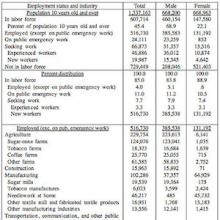Government
Price Increases in Eastern Europe with Special Regard to Hungary
One of the most significant differences between the functioning of the East European Communist economies and the mixed-market economies of the West was the way in which prices for goods and services were determined.
Discussion between Gorbachev and Mitterand about Romania, July 1989
The transcript of the Mitterrand – Gorbachev meeting of July 1989 illustrates the international awareness of the extensive control and repression of citizens in Ceauşescu’s Romania.
Transcript of the closed "trial" of Nicolae and Elena Ceausescu, December, 1989
Elena and Nicolae Ceausescu fled from Bucharest by helicopter on December 22, but the pilot soon landed, claiming that they would be fired upon. The couple then hijacked a car but they were recognized, chased and caught by local police in Tirgoviste.
The Timişoara Proclamation, March 1990
Written on March 11, 1990, the Timisoara Proclamation, was a 13-point document that called for continuing to build on the victory over the communist dictatorship achieved in December 16-20, 1989.
Minutes of the Meeting between Nicolae Ceausescu and Mikhail Gorbachev, December 1989
The seemingly cordial conversation between the Soviet and Romanian communist leaders less than two weeks before the troubles started in Timişoara provides evidence of the wide differences between them.
Telegram from the Minister of Foreign Affairs to all Embassies, December 1989
As the confrontation in Timisoara continued, the Romanian government tried to stonewall in its diplomatic contacts, and thus control the flow of information, in the hope that the repression unleashed against protesters would succeed in pacifying the rebels and then the dictatorship could resume b
Birth and Death in Romania, October 1986
In the last years of the regime, Pavel Câmpeanu, a prominent sociologist and a lifelong leftist and former prison cellmate of Nicoale Ceauşescu during World War II managed to smuggle out this article, which was published in The New York Review of Books.
Grafitti from the Romanian Streets, December 1989-January 1990
In February 1990, the ethnographer Irina Nicolau and a few friends, printed 250 copies of Ne-a luat valul [On the Crest of the Wave], the first book published in Romania about the 1989 Revolution. Included were 141 pieces of graffiti from December 1989-January 1990.
Letter of the Six, March 1989
In March of 1989, six prominent members of the Romanian Communist Party sent Nicolae Ceauşescu an open letter which was also leaked to the international press. In it they explicitly disagreed with his policies and suggested a number of reforms.

Long Teaching Module: Women and the Puerto Rican Labor Movement
In December 1898, at the close of the Spanish-American War, Spain surrendered control of Cuba, Puerto Rico, and Guam to the United States. Though Cuba achieved nominal independence in 1902, in 1917 Puerto Rico assumed the status of an American territory, which afforded Puerto Ricans U.S.